Abstract
The potential for denitrification in marl and peat sediments in the Shark River Slough in the Everglades National Park was determined by the acetylene blockage assay. The influence of nitrate concentration on denitrification rate and N2O yield from added nitrate was examined. The effects of added glucose and phosphate and of temperature on the denitrification potential were determined. The sediments readily denitrified added nitrate. N2O was released from the sediments both with and without added acetylene. The marl sediments had higher rates than the peat on every date sampled. Denitrification was nitrate limited; however, the yields of N2O amounted to only 10 to 34% of the added nitrate when 100 μM nitrate was added. On the basis of measured increases in ammonium concentration, it appears that the balance of added nitrate may be converted to ammonium in the marl sediment. The sediment temperature at the time of sampling greatly influenced the denitrification potential (15-fold rate change) at the marl site, indicating that either the number or the specific activity of the denitrifiers changed in response to temperature fluctuations (9 to 25°C) in the sediment. It is apparent from this study that denitrification in Everglades sediments is not an effective means of removing excess nitrogen which may be introduced as nitrate into the ecosystem with supply water from the South Florida watershed and that sporadic addition of nitrate-rich water may lead to nitrous oxide release from these wetlands.
Full text
PDF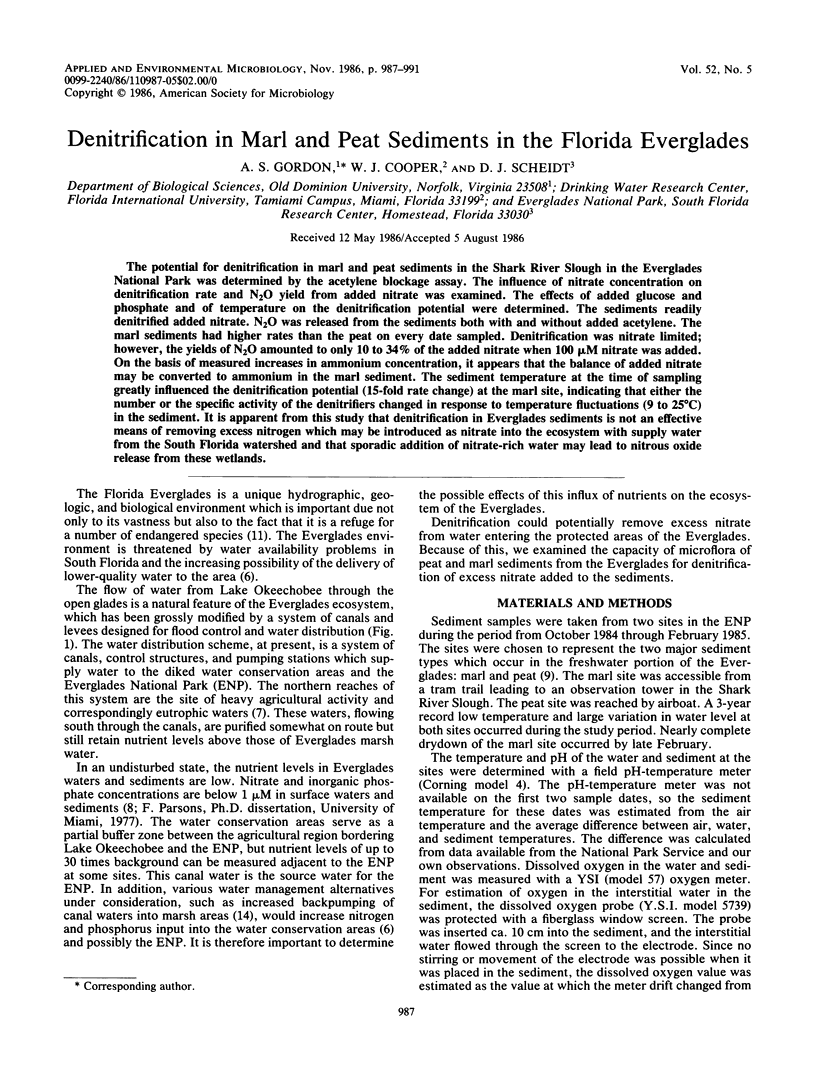
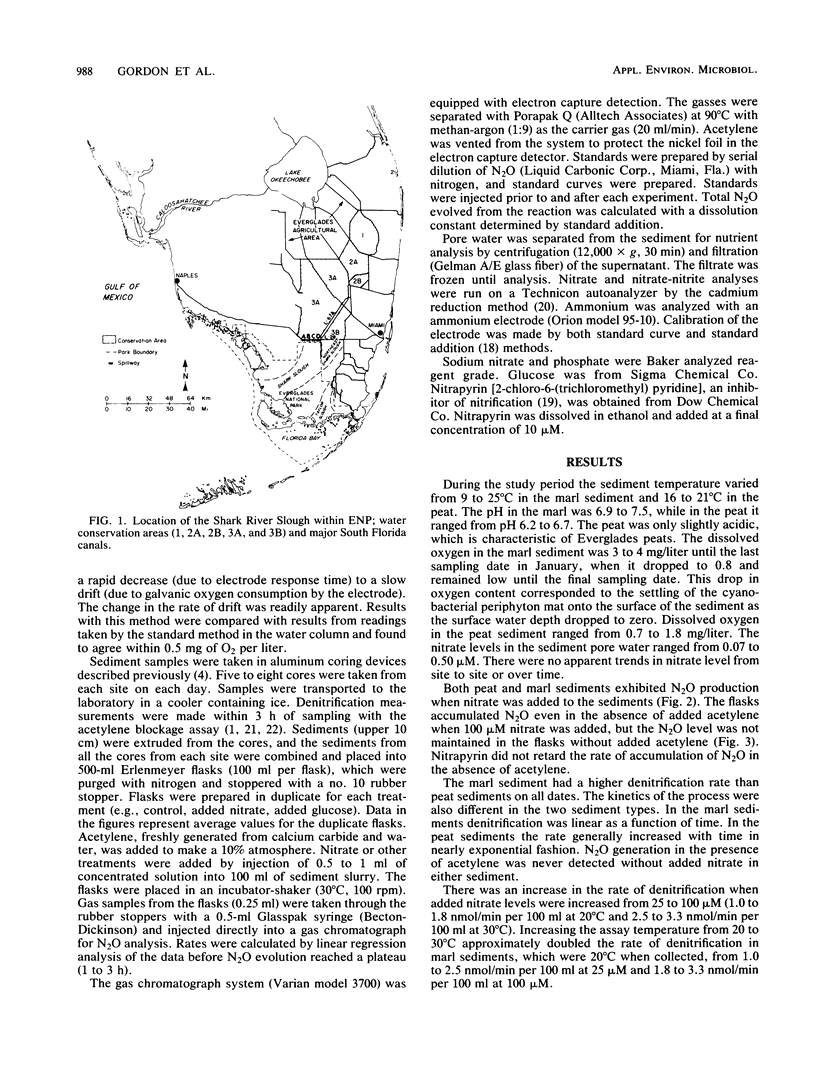
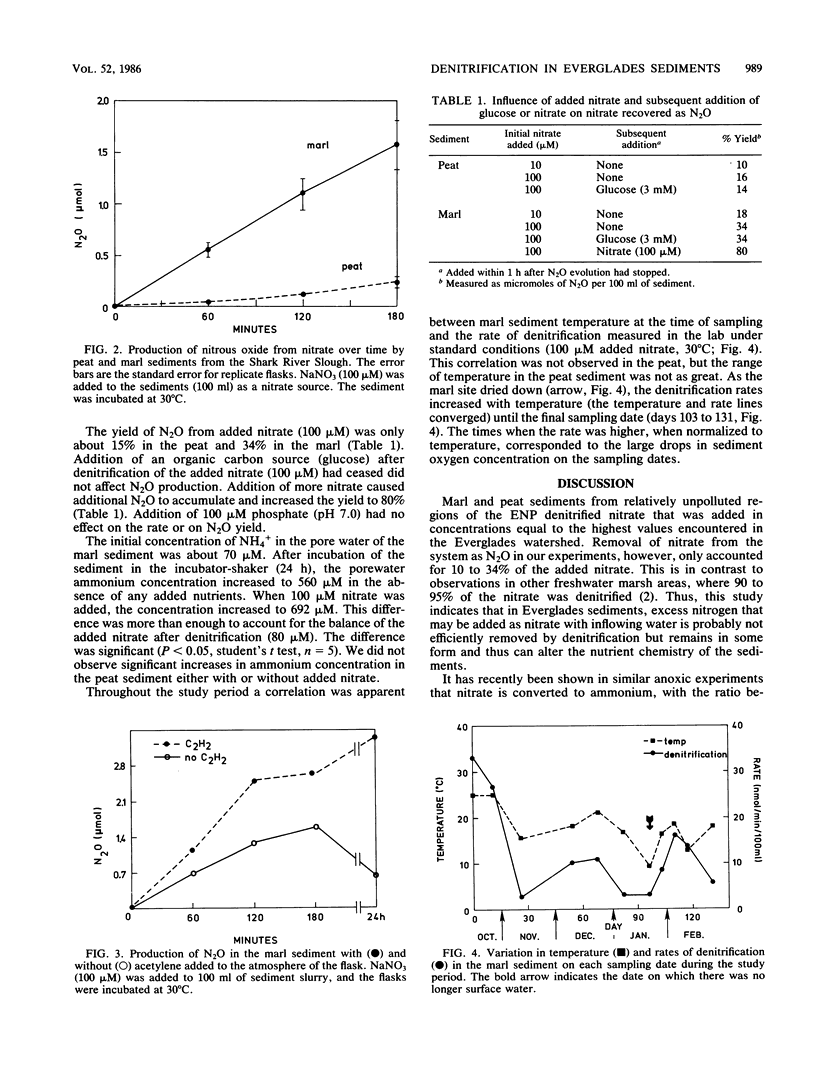
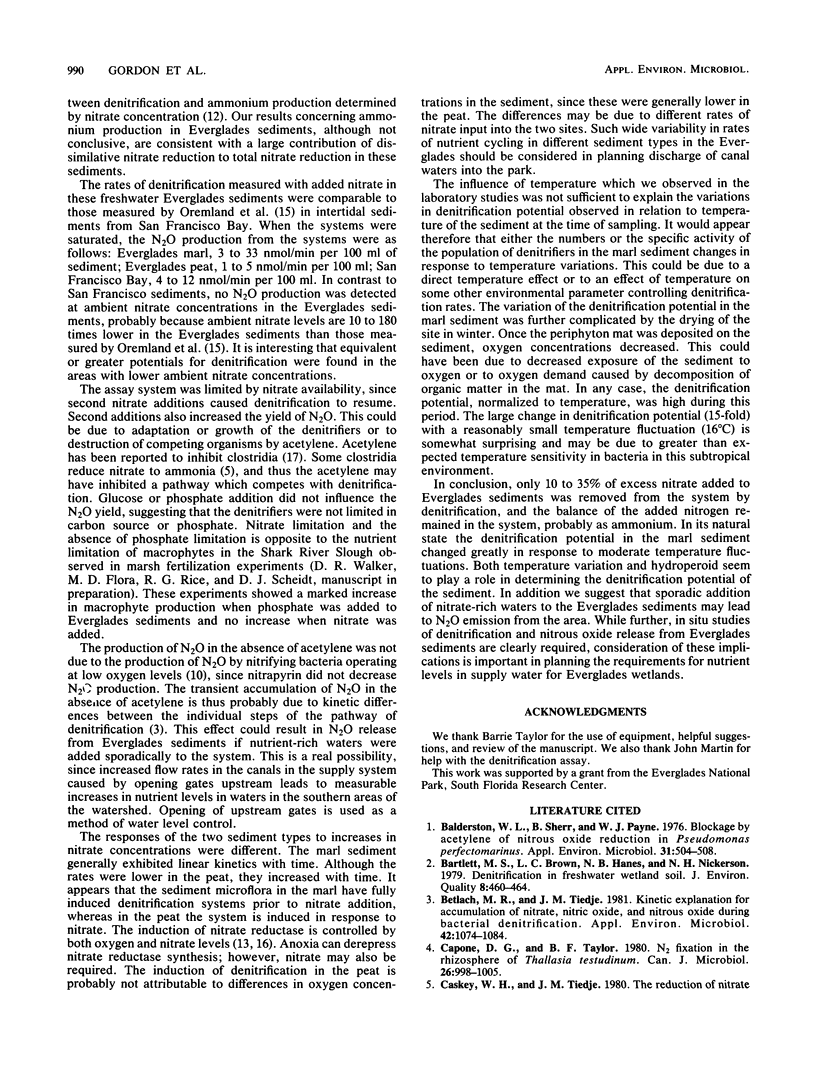
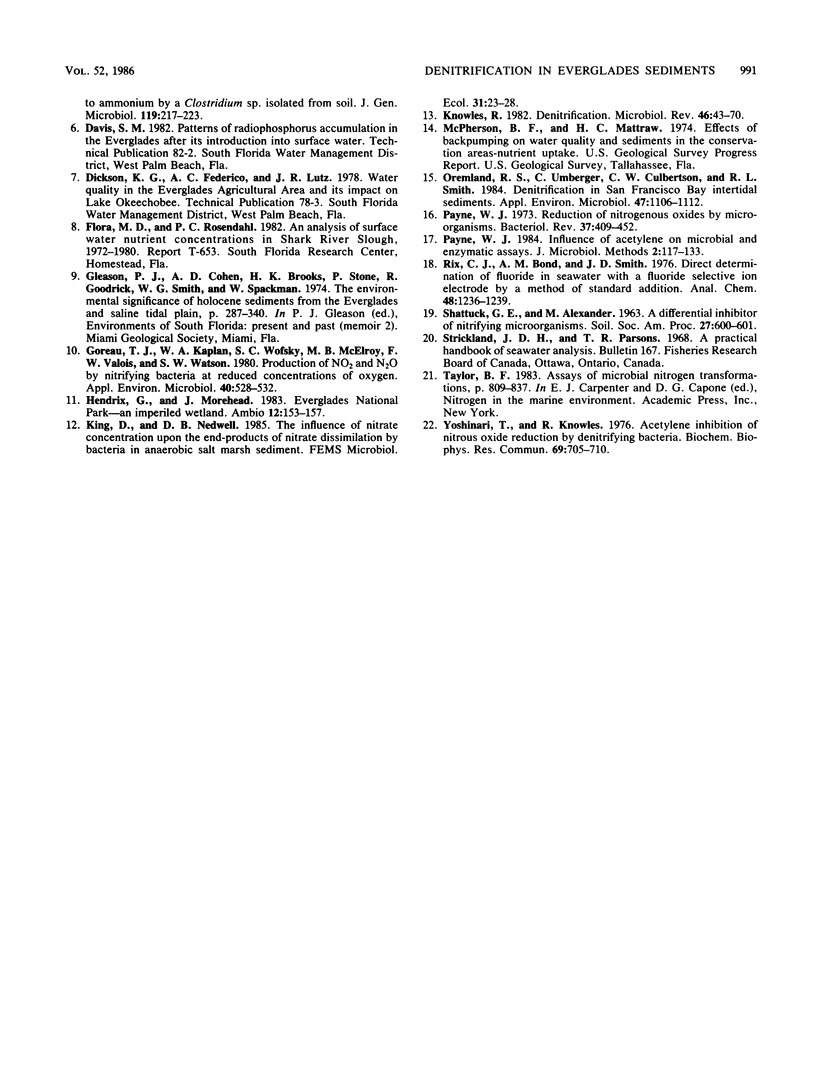
Selected References
These references are in PubMed. This may not be the complete list of references from this article.
- Balderston W. L., Sherr B., Payne W. J. Blockage by acetylene of nitrous oxide reduction in Pseudomonas perfectomarinus. Appl Environ Microbiol. 1976 Apr;31(4):504–508. doi: 10.1128/aem.31.4.504-508.1976. [DOI] [PMC free article] [PubMed] [Google Scholar]
- Betlach M. R., Tiedje J. M. Kinetic explanation for accumulation of nitrite, nitric oxide, and nitrous oxide during bacterial denitrification. Appl Environ Microbiol. 1981 Dec;42(6):1074–1084. doi: 10.1128/aem.42.6.1074-1084.1981. [DOI] [PMC free article] [PubMed] [Google Scholar]
- Capone D. G., Taylor B. F. N2 fixation in the rhizosphere of Thalassia testudinum. Can J Microbiol. 1980 Aug;26(8):998–1005. doi: 10.1139/m80-169. [DOI] [PubMed] [Google Scholar]
- Caskey W. H., Tiedje J. M. The reduction of nitrate to ammonium by a Clostridium sp. isolated from soil. J Gen Microbiol. 1980 Jul;119(1):217–223. doi: 10.1099/00221287-119-1-217. [DOI] [PubMed] [Google Scholar]
- Goreau T. J., Kaplan W. A., Wofsy S. C., McElroy M. B., Valois F. W., Watson S. W. Production of NO(2) and N(2)O by Nitrifying Bacteria at Reduced Concentrations of Oxygen. Appl Environ Microbiol. 1980 Sep;40(3):526–532. doi: 10.1128/aem.40.3.526-532.1980. [DOI] [PMC free article] [PubMed] [Google Scholar]
- Knowles R. Denitrification. Microbiol Rev. 1982 Mar;46(1):43–70. doi: 10.1128/mr.46.1.43-70.1982. [DOI] [PMC free article] [PubMed] [Google Scholar]
- Oremland R. S., Umberger C., Culbertson C. W., Smith R. L. Denitrification in san francisco bay intertidal sediments. Appl Environ Microbiol. 1984 May;47(5):1106–1112. doi: 10.1128/aem.47.5.1106-1112.1984. [DOI] [PMC free article] [PubMed] [Google Scholar]
- Payne W. J. Reduction of nitrogenous oxides by microorganisms. Bacteriol Rev. 1973 Dec;37(4):409–452. doi: 10.1128/br.37.4.409-452.1973. [DOI] [PMC free article] [PubMed] [Google Scholar]
- Yoshinari T., Knowles R. Acetylene inhibition of nitrous oxide reduction by denitrifying bacteria. Biochem Biophys Res Commun. 1976 Apr 5;69(3):705–710. doi: 10.1016/0006-291x(76)90932-3. [DOI] [PubMed] [Google Scholar]


